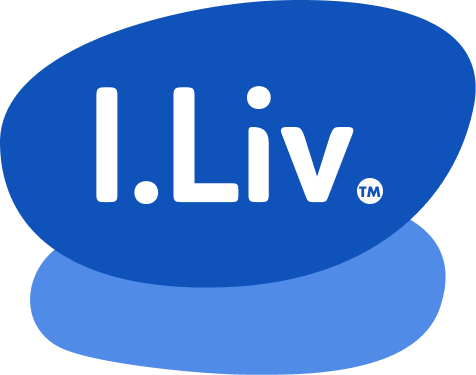The relentless pace of modern work takes a toll, particularly without a well-being program for women in the workplace. Employee burnout is a critical issue costing companies dearly, not just in lost productivity, but also in the high cost of replacing talented employees. A staggering 95% of HR leaders admit burnout is sabotaging workforce retention, according to a study by Kronos Incorporated and Future Workplace. The research revealed burnout is responsible for up to half (20% to 50%) of annual turnover in some organizations, with larger companies (over 2,500 employees) experiencing a higher impact (15% report burnout causing over 50% of turnover).
The American Psychological Association estimates a staggering 550 million workdays are lost each year due to stress on the job. The U.S. particularly struggles with work-life balance, with over 1 in 10 U.S. employees working 50+ hours a week (OECD report). This constant pressure disproportionately affects professional women who often juggle work demands with significant personal responsibilities.
Why Women? The Unique Challenges
Women face a unique set of challenges in the workplace that contribute to burnout. Here’s a closer look:
- Work-Life Balance: Women often shoulder a greater burden of domestic responsibilities, making it difficult to achieve a healthy work-life balance.
- Pay Equity: The gender pay gap persists, leading to financial stress and a sense of undervaluing.
- Imposter Syndrome: Women may experience feelings of self-doubt and inadequacy, hindering career advancement and confidence.
- Lack of Representation: In male-dominated industries, women may feel isolated and lack role models, hindering their sense of belonging.
Without a well-being program for women in the workplace, these challenges can lead to a cascade of negative consequences, including:
- Reduced Productivity: Burned-out employees are less engaged and productive.
- Increased Absenteeism: Burnout can lead to higher rates of sick leave and presenteeism (being physically present but mentally disengaged).
- Diminished Creativity and Innovation: A stressed and disengaged workforce is less likely to generate creative ideas.
- Compromised Mental and Physical Health: Burnout can lead to anxiety, depression, and even physical health problems.
The Solution: A Tailored Well-being Program for Women in the Workplace
A well-designed well-being program can be a powerful tool to combat burnout and empower female employees. Here’s a comprehensive approach that goes beyond basic initiatives:
1. Fostering a Supportive Work Culture:
- Leadership Commitment: Senior leadership needs to visibly champion well-being initiatives and set the tone for a supportive work environment.
- Open Communication: Encourage open communication about workload, stress levels, and challenges.
- Flexible Work Arrangements: Offer flexible work options like remote work, compressed workweeks, or part-time schedules to promote work-life balance.
- Mentorship and Sponsorship Programs: Connect women with experienced mentors and sponsors who can provide guidance, support career development, and advocate for their advancement.
2. Prioritizing Mental and Emotional Well-being:
- Mental Health Awareness: Educate employees about mental health and the signs of burnout.
- Access to Mental Health Resources: Provide confidential counseling services through Employee Assistance Programs (EAPs) or partnerships with mental health professionals.
- Mindfulness and Stress Management Programs: Offer workshops or resources on mindfulness techniques, stress management strategies, and healthy coping mechanisms.
3. Empowering Professional Growth:
- Personalized Learning and Development: Offer opportunities for continuous learning and professional development aligned with individual career goals.
- Leadership Development Programs: Invest in programs that equip women with leadership skills and confidence to advance their careers.
- Internal Networking Opportunities: Create opportunities for women to connect with colleagues across departments, fostering knowledge sharing and career exploration.
4. Recognizing and Rewarding Achievements:
- Performance-Based Recognition: Recognize and reward achievements based on contributions and performance, not just face time.
- Pay Equity Audits: Conduct regular pay equity audits to ensure fair compensation practices and address any gender pay gaps.
- Career Advancement Opportunities: Provide clear paths for career advancement and ensure opportunities are accessible and equitable for all employees.

Examples of Success
While specific data on turnover reduction might be challenging to isolate, companies known for their well-being initiatives can offer valuable insights:
Company: Netflix
While specific data on turnover reduction isn’t publically available, Netflix has implemented several initiatives aimed at reducing employee burnout and fostering a culture of well-being:
Unlimited Vacation Policy: Netflix provides employees with the freedom to take as much vacation time as they need, trusting them to manage their workload and personal time effectively. This reduces stress associated with rigid vacation schedules and encourages employees to disconnect and recharge.
Generous Parental Leave: Netflix offers extensive parental leave policies that go beyond the standard, allowing new parents more time to adjust and bond with their families. This support system helps reduce stress during a major life transition.
Focus on Performance, Not Hours: Netflix emphasizes results over time spent at the office. This empowers employees to manage their work hours efficiently and prioritize well-being without fear of negative repercussions.
High Compensation and Benefits: Netflix offers competitive salaries and a comprehensive benefits package, which helps reduce financial anxieties and fosters a sense of security among employees.
By prioritizing employee well-being through these initiatives, Netflix aims to create a work environment that reduces burnout and fosters a high-performing and innovative workforce.
Company: Kimberly-Clark
While specific turnover data isn’t available, Kimberly-Clark is known for its focus on employee well-being. Here are some of their initiatives:
Mindfulness Programs: They offer mindfulness training programs to help employees manage stress and improve focus.
Flexible Work Arrangements: They provide flexible work arrangements to promote work-life balance.
Employee Assistance Programs (EAPs): They offer comprehensive EAPs that provide confidential counseling and support services to employees facing personal or work-related challenges.
Focus on Mental Health: They actively promote mental health awareness and encourage employees to seek help if needed.
These initiatives, along with potentially positive employee reviews highlighting a supportive work environment on platforms like Glassdoor, suggest a company prioritizing employee well-being, which likely translates to reduced burnout and potentially lower turnover.
Company: Google
Another case study is Google, which successfully reduced employee turnover related to burnout by implementing comprehensive wellness and support programs.
Background
Google, known for its innovative and employee-friendly work environment, faced challenges with employee burnout that potentially threatened its ability to retain top talent. The tech industry is notorious for high job demands, rapid changes, and intense competition, which can lead to employee burnout and subsequent turnover.
Challenge
The primary challenge was the increasing rate of burnout among employees, which not only affected productivity but also led to higher turnover rates. This was particularly concerning in high-stakes areas of software development and project management. Google needed to address the root causes of burnout, which included overwork, insufficient recovery time, and lack of work-life balance.
Solution
Google implemented several strategic initiatives to combat burnout:
Right to Disconnect Policy: Google introduced a policy that encouraged employees to disconnect from work after hours and on weekends. This policy aimed to ensure employees had sufficient time to rest and recover, reducing feelings of being constantly ‘on call’.
Employee Resource Groups and Support Programs: These included access to mental health professionals, workshops on stress management, and forums for employees to share their experiences and coping strategies.
Workload Management Tools: Implementation of tools and resources to help employees and managers monitor workload effectively, ensuring that work was distributed evenly and that no employee was consistently overloaded.
Flexible Work Arrangements: Google expanded its flexible work options, allowing for telecommuting, part-time work, and flexible hours. This was particularly beneficial for employees who struggled with work-life balance.
Results
The initiatives implemented by Google showed significant positive outcomes:
A noticeable reduction in reported feelings of burnout.
Improvement in employee satisfaction and engagement scores.
A reduction in turnover rates, particularly among roles that had previously seen high levels of burnout.
Key Takeaways
This case study highlights the importance of proactive organizational strategies in managing employee wellness. Google’s approach demonstrates that addressing burnout requires a holistic approach involving policy changes, support systems, and management practices that prioritize employee well-being.
These strategies not only help in retaining talent but also in fostering a productive and positive work environment.
Beyond the Company Walls
- A well-being program for women in the workplace doesn’t stop at the office door. Consider these additional strategies to support women holistically:
- Partnerships with Childcare Providers: Partner with childcare providers to offer on-site or subsidized childcare options, easing a significant burden for working mothers.
- Financial Wellness Programs: Offer financial literacy workshops or resources to help women manage personal finances and reduce stress about financial security.
- Community Building Events: Organize events that connect women employees outside of work, fostering a sense of community and belonging that extends beyond the company walls.
Measuring Success and ROI of a Well-Being Program for Women in the Workplace
Tracking the effectiveness of your well-being program for women in the workplace is crucial. Here are some metrics to consider:
- Employee Engagement Surveys: Regularly measure employee engagement and well-being through surveys.
- Turnover Rates: Monitor turnover rates, particularly among women, to assess the program’s impact on retention.
- Absenteeism and Presenteeism Rates: Track changes in absenteeism and presenteeism rates, which can indicate improvements in employee well-being.
- Utilization Rates of Well-being Resources: Monitor participation rates in well-being programs and workshops to assess their effectiveness.
- Investing in well-being programs for women is not just the right thing to do, it’s a smart business decision.
The Return on Investment (ROI) of Well-being
Reduced Turnover Costs: Replacing a talented employee can cost up to twice their annual salary. A well-being program that reduces turnover can lead to significant cost savings.
Increased Productivity: Engaged and healthy employees are more productive, leading to a positive impact on the bottom line.
Enhanced Innovation and Creativity: A thriving workforce fosters a culture of innovation and creativity, leading to a competitive advantage.
Improved Employer Branding: A reputation for prioritizing employee well-being attracts and retains top female talent.
For more knowledge on the ROI of a well-being program for women in the workplace read this article: Work-Life Balance Initiatives: The ROI in Large Corporations
Building a Sustainable Future
By implementing a comprehensive well-being program tailored to the unique needs of women, companies can create a supportive and empowering work environment. This approach not only reduces burnout and fosters a thriving workforce, but also positions the company for long-term success and innovation. In today’s competitive talent market, prioritizing women’s well-being is no longer a luxury; it’s a strategic imperative for building a sustainable and successful future.

